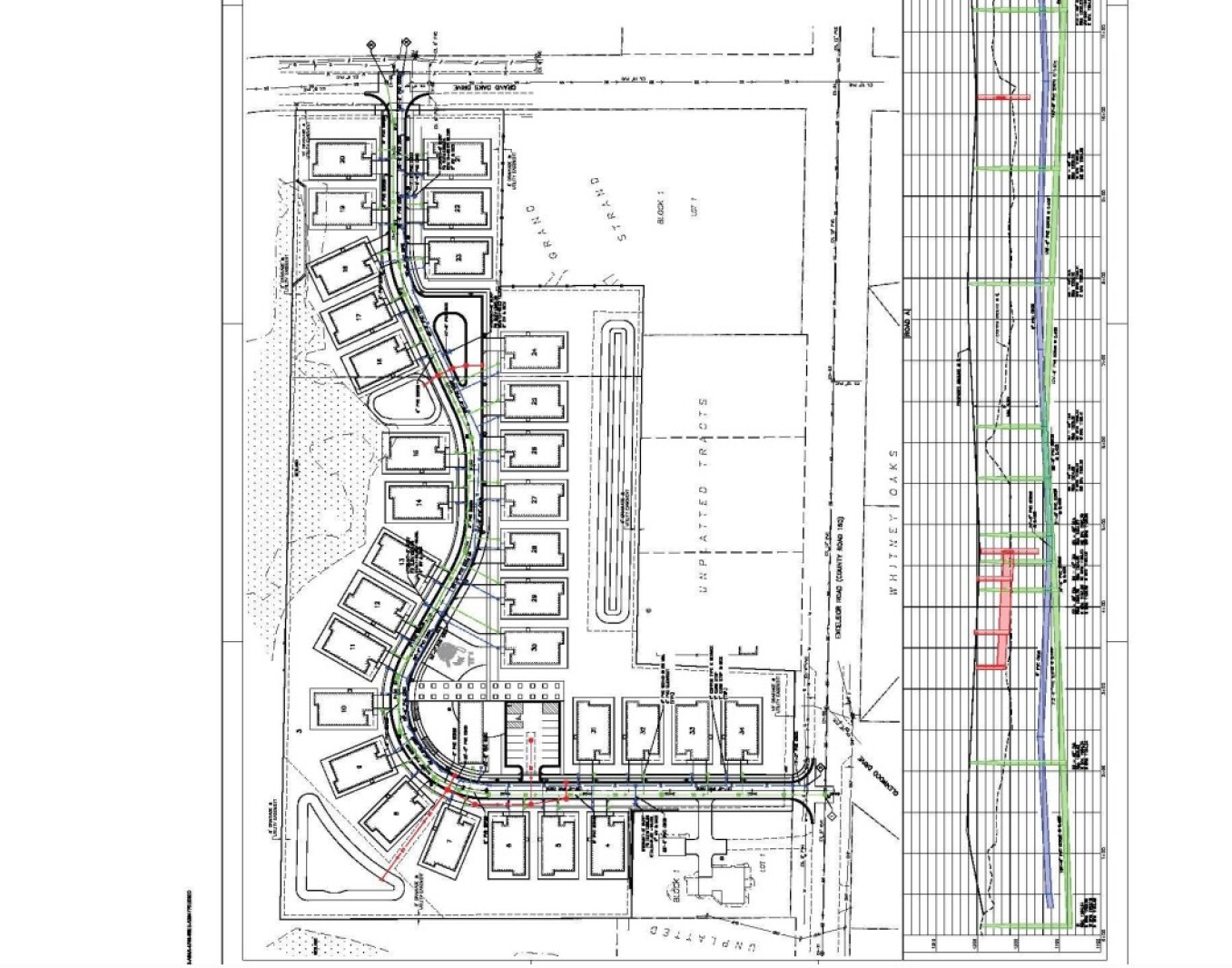Report on Collaborative Sustainable Urban Development in Kapit, Sarawak, in Alignment with UN Sustainable Development Goals
1.0 Introduction
A strategic meeting was held in Kapit, Sarawak, between Malaysia’s Minister of Works, Alexander Nanta Linggi, and Norwegian architect and urban planner, Hans-Jacob Roald of the Western Norway University of Applied Sciences. The primary objective of this international collaboration was to assess and provide expert consultation on the “Kapit Master Plan,” ensuring its alignment with global best practices for sustainable development and the United Nations Sustainable Development Goals (SDGs).
2.0 Strategic Framework and Objectives
The initiative is a component of Sarawak’s broader Post COVID-19 Development Strategy 2030, which seeks to foster sustainable and inclusive growth. The collaboration aims to integrate key SDG principles into the regional development plan.
- To develop inclusive and environmentally conscious urban growth strategies for Kapit.
- To leverage international expertise for the creation of greener urban models.
- To ensure that modern development respects and integrates local culture and heritage, directly supporting SDG Target 11.4.
3.0 On-Site Assessment and Consultation
Mr. Roald conducted a detailed inspection of key local infrastructure and redevelopment sites to inform his recommendations. The assessment focused on integrating sustainability into practical development projects.
- Road Infrastructure Upgrades: Assessed current projects to ensure they contribute to resilient and sustainable infrastructure (SDG 9).
- Former Kapit Airport Redevelopment Area: Evaluated the potential for creating a sustainable, multi-functional urban space that serves community needs (SDG 11).
4.0 Alignment with Sustainable Development Goals (SDGs)
The visit and subsequent planning efforts place significant emphasis on achieving specific SDGs:
- SDG 11: Sustainable Cities and Communities: The core focus is on making Kapit inclusive, safe, resilient, and sustainable. The “Kapit Master Plan” aims to create green public spaces and safeguard local cultural heritage.
- SDG 17: Partnerships for the Goals: The collaboration between Malaysian authorities and a Norwegian academic institution exemplifies a global partnership for knowledge-sharing and sustainable development.
- SDG 9: Industry, Innovation and Infrastructure: The review of road upgrades and redevelopment sites is geared towards building resilient infrastructure that supports economic development and human well-being.
- SDG 8: Decent Work and Economic Growth: By aligning with Sarawak’s 2030 development strategy, the plan aims to promote sustained, inclusive, and sustainable economic growth for the region.
- SDG 13: Climate Action: The emphasis on “greener urban models” demonstrates a commitment to integrating climate change measures into urban planning and policy.
Sustainable Development Goals (SDGs) Analysis
1. Which SDGs are addressed or connected to the issues highlighted in the article?
- SDG 9: Industry, Innovation and Infrastructure: The article mentions the inspection of “local infrastructure” and “road upgrades,” which are key components of building resilient infrastructure.
- SDG 11: Sustainable Cities and Communities: This is the central theme of the article. The focus on “sustainable urban development,” the “Kapit Master Plan,” and creating “inclusive and environmentally conscious growth” directly aligns with making cities and human settlements inclusive, safe, resilient, and sustainable.
- SDG 17: Partnerships for the Goals: The collaboration between Malaysia’s Minister of Works and a Norwegian architect from the Western Norway University of Applied Sciences is a clear example of an international partnership to achieve sustainable development goals. The article explicitly mentions that Sarawak’s development strategy “promotes international collaboration.”
2. What specific targets under those SDGs can be identified based on the article’s content?
-
Under SDG 9: Industry, Innovation and Infrastructure
- Target 9.1: Develop quality, reliable, sustainable and resilient infrastructure, including regional and transborder infrastructure, to support economic development and human well-being. The article’s reference to “road upgrades” and inspection of “local infrastructure” directly relates to developing and improving infrastructure.
-
Under SDG 11: Sustainable Cities and Communities
- Target 11.3: By 2030, enhance inclusive and sustainable urbanization and capacity for participatory, integrated and sustainable human settlement planning and management in all countries. The visit of an urban planner to advise on the “Kapit Master Plan” for “inclusive and environmentally conscious growth” is a direct action towards this target.
- Target 11.4: Strengthen efforts to protect and safeguard the world’s cultural and natural heritage. The architect’s advice on “planning approaches that balance modern development with local culture” supports this target.
- Target 11.a: Support positive economic, social and environmental links between urban, peri-urban and rural areas by strengthening national and regional development planning. The “Kapit Master Plan” and “Sarawak’s Post COVID-19 Development Strategy 2030” are examples of regional development planning aimed at achieving sustainable growth.
-
Under SDG 17: Partnerships for the Goals
- Target 17.9: Enhance international support for implementing effective and targeted capacity-building in developing countries to support national plans to implement all the Sustainable Development Goals. The visit by the Norwegian expert to provide insights and advice is a form of international support and capacity-building for Malaysia’s urban development plans.
- Target 17.16: Enhance the global partnership for sustainable development, complemented by multi-stakeholder partnerships that mobilize and share knowledge, expertise, technology and financial resources. The collaboration between Malaysian and Norwegian entities to share knowledge on urban planning exemplifies this partnership.
3. Are there any indicators mentioned or implied in the article that can be used to measure progress towards the identified targets?
The article does not mention specific quantitative indicators, but it implies several qualitative or process-based indicators:
- Existence of a National or Regional Urban Development Plan: The article explicitly mentions the “Kapit Master Plan” and “Sarawak’s Post COVID-19 Development Strategy 2030.” The development and implementation of these plans are direct indicators of progress towards Target 11.3 and 11.a.
- Implementation of Infrastructure Projects: The mention of “road upgrades” and inspection of “redevelopment sites” implies ongoing or planned projects. The number and scale of these projects can serve as indicators for Target 9.1.
- Establishment of International Partnerships: The collaboration between the Malaysian Minister and the Norwegian architect is a tangible indicator of an international partnership (Target 17.16) and a capacity-building initiative (Target 17.9).
4. Table of SDGs, Targets, and Indicators
| SDGs | Targets | Indicators (as identified or implied in the article) |
|---|---|---|
| SDG 9: Industry, Innovation and Infrastructure | 9.1: Develop quality, reliable, sustainable and resilient infrastructure. | Implementation of infrastructure projects such as “road upgrades” and work on “redevelopment sites.” |
| SDG 11: Sustainable Cities and Communities | 11.3: Enhance inclusive and sustainable urbanization and capacity for planning. | Development and implementation of the “Kapit Master Plan” for inclusive and sustainable growth. |
| 11.4: Protect and safeguard cultural and natural heritage. | Adoption of planning approaches that “balance modern development with local culture.” | |
| 11.a: Strengthen national and regional development planning. | Existence of regional development plans like the “Sarawak’s Post COVID-19 Development Strategy 2030.” | |
| SDG 17: Partnerships for the Goals | 17.9: Enhance international support for capacity-building. | The visit of a Norwegian architect to provide insights and expertise on urban planning. |
| 17.16: Enhance the global partnership for sustainable development. | The active collaboration between Malaysian government (MP for Kapit) and a Norwegian academic institution (Western Norway University of Applied Sciences). |
Source: scandasia.com







